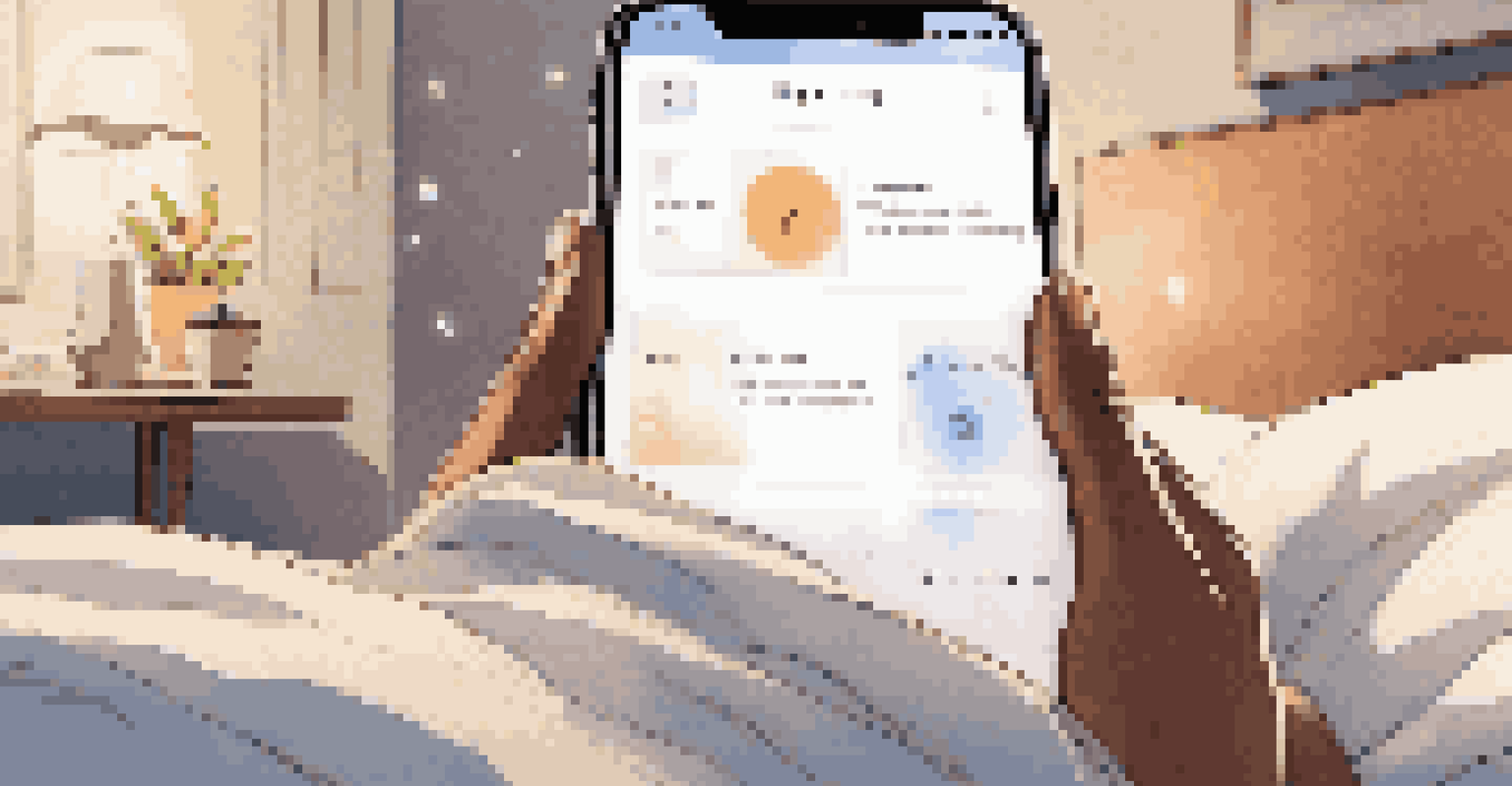Sleep Research: The Role of Technology in Sleep Studies

Understanding Sleep Research and Its Importance
Sleep research is a vital field that helps us understand the complexities of sleep and its impact on our overall health. By studying various sleep patterns and disorders, researchers aim to uncover how sleep affects our cognitive functions, mood, and physical well-being. This understanding is crucial, as sleep is often overlooked despite being a fundamental aspect of life.
Sleep is the best meditation.
The importance of sleep research has been magnified in recent years, with growing recognition of sleep's role in mental health issues like anxiety and depression. As society becomes increasingly aware of the effects of sleep deprivation, the demand for effective treatments and interventions has surged. This is where technology comes into play, offering innovative tools and techniques to enhance sleep studies.
In essence, sleep research not only sheds light on why we sleep but also how we can improve our sleep quality. By leveraging technology, researchers can gather more accurate data, leading to better insights and ultimately, better health outcomes for individuals struggling with sleep-related issues.
The Evolution of Sleep Study Technologies
Over the decades, technology has dramatically transformed sleep studies, progressing from simple observation methods to sophisticated monitoring systems. Early researchers relied on subjective reports from participants, which were often unreliable and inconsistent. However, advancements in technology have paved the way for objective data collection, making sleep studies more accurate and comprehensive.

For instance, polysomnography (PSG) emerged as a groundbreaking technique, allowing researchers to monitor brain waves, heart rate, and breathing patterns during sleep. This method provided valuable insights into different sleep stages, helping identify disorders such as sleep apnea and insomnia. With the advent of wearable devices and smartphone apps, researchers now have access to real-time data, making sleep studies more accessible to the average person.
Importance of Sleep Research
Sleep research is essential for understanding how sleep impacts our mental and physical health.
As technology continues to evolve, so too does the potential for deeper insights into sleep patterns and disturbances. This evolution not only enhances our understanding of sleep but also empowers individuals to take charge of their sleep health.
Wearable Technology: A Game Changer in Sleep Research
Wearable technology has revolutionized the way we approach sleep research, providing an easy and convenient means of monitoring sleep patterns. Devices like smartwatches and fitness trackers can track metrics such as heart rate variability, sleep duration, and even REM cycles. This information helps researchers analyze sleep quality in real-world settings rather than just controlled environments.
The best bridge between despair and hope is a good night’s sleep.
These wearables are not just for researchers; they also empower individuals to take control of their sleep habits. By accessing their sleep data, users can identify trends and make informed decisions about their sleep hygiene. For example, someone might notice that their sleep quality dips after late-night screen time, prompting them to adjust their habits accordingly.
In essence, wearable technology bridges the gap between research and personal health, making it easier for everyone to engage with their sleep health actively. As these devices continue to improve, we can expect even more accurate and detailed insights into our sleep.
Sleep Apps: Monitoring and Improving Sleep Quality
In addition to wearables, various sleep apps have emerged, offering tools for both tracking and improving sleep quality. These apps can provide insights into sleep patterns, suggest bedtime routines, and even guide users through relaxation techniques. By harnessing the power of technology, these applications make sleep research more accessible to the general public.
Many sleep apps utilize algorithms that analyze user data to offer personalized recommendations. For example, some apps might suggest optimal sleep times based on historical data, while others provide soundscapes or guided meditations to help users fall asleep faster. This personalization is key, as sleep is highly individual, and what works for one person may not work for another.
Tech Revolutionizes Sleep Studies
Advancements in technology, like wearables and AI, have transformed the accuracy and accessibility of sleep research.
Ultimately, sleep apps serve as valuable tools for anyone looking to enhance their sleep experience. By combining research-backed strategies with user-friendly interfaces, these applications make it easier than ever to prioritize and improve sleep quality.
Artificial Intelligence in Sleep Research
Artificial intelligence (AI) is making waves in sleep research, enabling more sophisticated data analysis and predictive modeling. AI algorithms can sift through vast amounts of sleep data to identify patterns and correlations that may not be immediately evident to human researchers. This capability opens the door to new insights and advancements in sleep science.
For instance, AI can help predict sleep disorders by analyzing data from various sources, including wearables and sleep apps. By recognizing subtle changes in sleep patterns, AI can alert users or healthcare providers to potential issues before they become more serious. This proactive approach could lead to earlier interventions and improved health outcomes for those at risk.
As AI technology continues to develop, its integration into sleep research will likely deepen, leading to even more innovative solutions for managing and understanding sleep health. This marriage of technology and research holds great promise for the future of sleep studies.
Challenges and Limitations of Sleep Research Technology
While technology has significantly advanced sleep research, it is not without its challenges and limitations. One major concern is data privacy; as individuals share their sleep data with apps and devices, safeguarding this information becomes critical. Users must trust that their data will be handled responsibly and ethically, which can be a barrier to widespread adoption.
Another challenge is the accuracy of consumer technology compared to clinical tools. While wearables and sleep apps provide valuable insights, they may not always be as precise as traditional methods like polysomnography. This discrepancy can lead to misunderstandings about one's sleep quality or potential issues, emphasizing the importance of combining personal data with professional advice.
Future of Sleep Tech is Bright
The integration of sophisticated tools and AI in sleep research promises better insights and personalized treatment options.
Finally, as technology evolves, so do the methods of sleep research. Researchers must continually adapt and validate new tools to ensure they provide meaningful insights. Overcoming these challenges is essential for maximizing the benefits that technology can bring to sleep studies.
The Future of Technology in Sleep Research
Looking ahead, the future of sleep research technology is incredibly promising. As we continue to innovate, we can expect even more advanced tools and techniques to emerge, enabling researchers to delve deeper into the science of sleep. This progress could lead to breakthroughs in understanding sleep disorders and developing personalized treatment options.
Moreover, the integration of more sophisticated AI and machine learning models will likely enhance predictive capabilities, allowing for more accurate assessments of sleep health. This will not only benefit researchers but also individuals seeking to improve their sleep quality. The potential for technology to enhance our understanding of sleep is limitless.

Ultimately, as technology continues to shape the landscape of sleep research, we are on the cusp of a new era where better sleep health is within reach for everyone. By embracing these advancements, we can pave the way for improved well-being and quality of life.